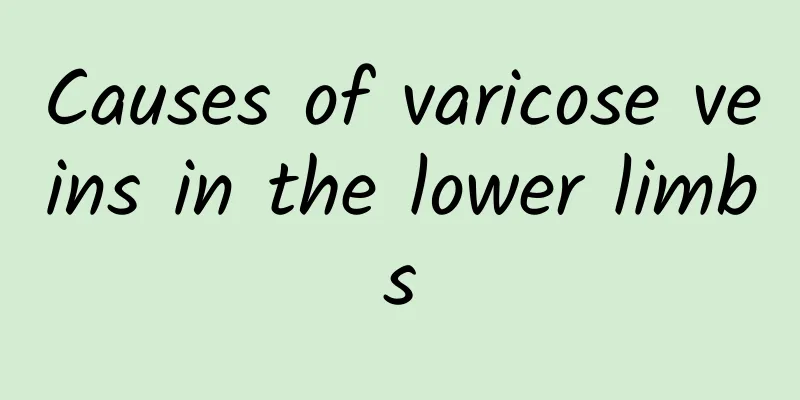What to do if the skin ulcers and yellow water flow

|
The skin is extremely fragile, not only because some of people's daily behaviors may harm the skin, but also if infected with fungi and bacteria, it may cause skin ulcers. If skin ulcers are not treated in time, they may bring more serious consequences. If skin ulcers have already occurred, you must receive treatment properly. What should I do if my skin ulcers and yellow fluid oozes? Introduction to Skin Ulcers Skin ulcer is a defect caused by damage to the dermis or deep skin tissue. Traumatic skin ulcers are often caused by physical and chemical factors acting directly on tissues. Microbial infectious diseases are mostly caused by bacteria, fungi, spirochetes, viruses, etc., which cause tissue destruction. Rupture of a nodule or tumor. Vasculitic skin ulcers caused by immune abnormalities are caused by tissue necrosis due to inflammation of arteries or arterioles. Circulatory or neurological dysfunction is a nutritional disorder that causes tissue necrosis, such as varicose veins, leprosy skin ulcers, etc. Cause: What causes skin ulcers? 1. Bacterial diseases Furuncles, carbuncles, cellulitis, hidradenitis, skin tuberculosis, cutaneous anthrax, glanders, cutaneous diphtheria, necrotizing acne, leprosy, tropical skin ulcers, mycobacterial skin ulcers, oral tuberculous skin ulcers. 2. Fungal diseases Sporotrichosis, cutaneous cryptococcosis, histoplasmosis, coccidioidomycosis, aspergillosis, mycetoma, actinomycosis, nocardiosis, tinea versicolor, kerion, cutaneous mucormycosis. 3. Viral diseases Hand, foot and mouth disease. (IV) Parasitic diseases Cutaneous amebiasis and cutaneous myiasis. 5. Sexually transmitted diseases Genital herpes, syphilis, chancroid, granuloma inguinale, lymphogranulomatosis. (VI) Allergic skin diseases Fixed drug eruption. 7. Vasculitis and vascular diseases Polyarteritis nodosa, allergic vasculitis, thromboangiitis obliterans, papular necrotizing tuberculous eruption, erythema indura, pyoderma gangrenosum, Wegener's granulomatosis, arteriosclerosis obliterans, stasis dermatitis, Raynaud's disease. 8. Physical diseases Radiation dermatitis, frostbite, bedsores. (IX) Occupational skin diseases Chromium, nickel, sodium, zinc, cobalt, hydrochloric acid, sulfuric acid, hydrofluoric acid, sodium hydroxide and sodium carbonate can all cause skin ulcers. 10. Autoimmune diseases Behçet's disease. (XI) Tumor Basal cell carcinoma. Squamous cell carcinoma, malignant melanoma, sebaceous gland carcinoma, malignant histiocytosis, fibrosarcoma, verrucous carcinoma, multiple plasmacytoma. (XII) Others Acrodermatitis continua, nodular fat necrosis, lipogranuloma, gangrenous balanitis, acute vulvar skin ulceration. Clinical manifestations At first, the area will be itchy, painful, red and swollen, and then it will break open, ooze fluid and form an ulcer. Later, the ulcer did not heal for a long time, the sore hole sunk, and the edge formed a rim. The flesh on the sore surface was grayish white or dark red, and grayish black or greenish sewage flowed out, which was extremely smelly. The skin around the sore hole was dark red or purple-black, and eczema occurred due to immersion in the poisonous water. The wound becomes more and more rotten and deeper, and even the outer flesh may fall off, revealing the tibia. If the affected limb is accompanied by exposed blue veins, and the symptoms are mild in the morning and severe in the evening, it may last for years, be difficult to heal, or may heal and ulcerate again, and spread rapidly, becoming cauliflower-shaped. Occasionally, it may become cancerous, making it even more difficult to treat. Chronic ulcers are common complications of varicose veins in the lower limbs. Malnutrition ulcers are caused by poor venous return in the lower limbs and local tissue malnutrition. In traditional Chinese medicine, it falls under the category of "ecthyma". Because it has the characteristics of being difficult to heal and being very easy to relapse after recovery, it is also one of the more difficult diseases in surgical clinical practice. treat pathology Normally, due to various injuries to the peripheral blood vessels or unknown reasons, blood circulation disorders in the limbs cause local ischemia and hypoxia, which eventually lead to necrosis, ulcers, and even gangrene of the skin and subcutaneous tissue of the limbs, and the formation of long-lasting ulcer wounds, which is quite common in clinical practice. Generally speaking, it can be summarized into two types, namely arterial, usually caused by insufficient blood supply due to stenosis or occlusion of the lumen, such as arterial embolism, thrombotic occlusive vessels and Raynaud's syndrome; venous, usually caused by reflux obstruction due to lumen obstruction, such as varicose veins of the lower limbs, deep vein thrombosis of the limbs, etc. Although the causes are different, they all have basically similar lesions and repair and healing processes. Among this type of disease, common skin ulcers are easier to treat, while chronic ulcers in the elderly are more difficult to treat. This disease occurs in chronic ulcers on both sides of the tibia in the lower 1/3 of the calf. The literature refers to it as "trouser hem sores" or "skirt hem sores", which often occur in patients who stand for a long time, walk with weight, and have varicose veins in the lower limbs. In the past, we mostly used traditional Chinese medicine to treat chronic lower limb ulcers by external application of tissue-generating adhesive plasters. For wounds with a lot of pus that was difficult to remove, we used mercury-containing compounds such as Zushengdan, Wuwudan, and Jiuyidan to remove the pus. Because mercury preparations are harmful to the human body, they are no longer used in clinical practice. However, there is currently no better product for removing caries, which prolongs the wound healing time. Chronic calf ulcers are generally caused by trauma, burns or chronic inflammation, and are more common in middle-aged and elderly men. In the past, it was difficult to treat this type of ulcer clinically, skin grafting was not easy to succeed, and patients suffered greatly. Treatment It is recommended to use external medication for treatment. External application of plasters made from pure Chinese medicine can draw out toxins, promote tissue regeneration, eliminate blood stasis and relieve pain, clear away heat and detoxify, resolve decay and heal sores. It can quickly repair ulcer tissue and achieve the purpose of healing. The plaster can remove toxins and regenerate flesh from the inside out, remove necrotic tissue, and the wound will gradually grow flesh and level out from the inside out until it heals. Keeping the medicine and the skin oily and moist makes dressing changes easy and painless. Therefore, plaster has the effect of eliminating wound pain. After the plaster is applied, the drug molecules reach the lesions directly through the pores of the skin, and after penetration and absorption, they achieve transdermal drug delivery, causing the expansion of blood vessels in the skin and the affected area, and promoting metabolism and regeneration. It is highly effective in treating wounds that have not healed for a long time and skin infections and ulcers caused by various other reasons. Take vitamin C tablets orally, 1.0g/d, and apply external ointment and bandage. It is prohibited to use disinfectants for debridement and do not mix them with any external medications. The specific method is: before the first use, first clean the ulcer wound, remove the surface necrotic material and secretions, rinse with saline, and apply the ointment about 2-3 mm thick (stir it into a paste before use for better effect), and apply it flexibly according to the location of the ulcer. Generally, after applying the medicine, the wound is bandaged with 12-18 layers of sterile toilet paper (or ordinary toilet paper roll) and 4-8 layers of sterile gauze. The frequency of dressing changes is determined based on the amount of wound secretions. For those with heavy secretions, change the dressing twice a day; for those with light secretions, change the dressing once a day. The principle is to prevent the exudate from soaking through the bandage. The color of the wound surface will return to normal after 7-14 days; if the medication is continued, granulation tissue will grow and the wound will gradually become lighter. If the onset is within 1 month, the disease can be completely cured by taking medicine for about 1 month. If the onset of the disease is more than 3 years, it will take a longer time, depending on the specific circumstances. Without causing new damage, necrotic tissue should be removed promptly and drainage should be unobstructed. Strengthen systemic nutritional support, anti-infection, maintain internal environment stability, and treat primary diseases. After local dressing changes for varicose veins, the calf needs to be moderately tightened with an elastic bandage and Chinese medicine for promoting blood circulation and removing blood stasis should be taken according to syndrome differentiation. If there is venous thrombosis, specialized treatment for the thrombosis is also required. People with diabetes should use glucose-lowering drugs to keep their blood sugar levels within the normal range as much as possible. For those with pressure injuries caused by a small splint, hot compresses can be applied to the calves to promote blood circulation. For those with sacral bedsores, try not to press the sacrum, especially when lying down. Skin ulcers in children: 1. Use 3% boric acid water for wet compress, 3 to 4 times a day, each time for 20 minutes. If the lesions no longer exude fluid, zinc oxide paste can be used instead to promote early healing of the lesions. If there is secondary infection, antibiotics should be taken orally and topically. Neomycin zinc oxide paste can be applied topically. If caused by fungus, apply nystatin glycerin. Very good results can be achieved. 2. How to care for obese children: If there is skin adhesion and friction at wrinkles, apply simple powder 6-8 times a day to keep the area dry and reduce friction. Avoid washing with soap and hot water, keep your skin clean and dry. 3. A scratch on the superficial layer of the epidermis will not leave scars, but damage to the deep layer of the epidermis may leave scars. |
<<: What medicine is best for treating uterine cold?
>>: How to treat uterine cold quickly and best
Recommend
Can varicocele be cured?
Varicose cord is a disease phenomenon. This disea...
Can pregnant women eat pigeon meat?
For pregnant women, eating some pigeon meat appro...
What is the fastest cure for tinea pedis? Chinese medicine prescriptions for treating serious diseases
Tinea pedis is an extremely common skin disease. ...
What causes back pain and urination pain?
If you experience lower back pain or pain when ur...
How to use Sanfutie. How to use, precautions
If you want to achieve the ideal effect of “treati...
What tests can be done during ovulation? Female friends, come and find out!
The physiological structure of women is much more...
Is it normal for chickenpox to fester?
Chickenpox is an acute disease caused by varicell...
Black discharge without menstruation
Generally speaking, every woman will have her per...
What is the reason for the dull pain in the abdomen at 40 days of pregnancy?
Women are in the early stages of pregnancy at 40 ...
Chinese medicine for treating rapid heartbeat
We all know that there are many types of heart di...
What toothpaste is good for pregnant women with toothache
For pregnant women, it is important to maintain g...
According to the old Chinese doctor, doing one thing before scraping can double the effect!
Gua Sha can effectively relieve colds, fatigue an...
Can I eat green dates during confinement?
Green dates are one of the favorite fruits of man...
Symptoms of mites
Mites are relatively tiny animals that are invisi...
Lumbar vertebra tuberculosis right leg pain
The lumbar spine is very important to us. If ther...









